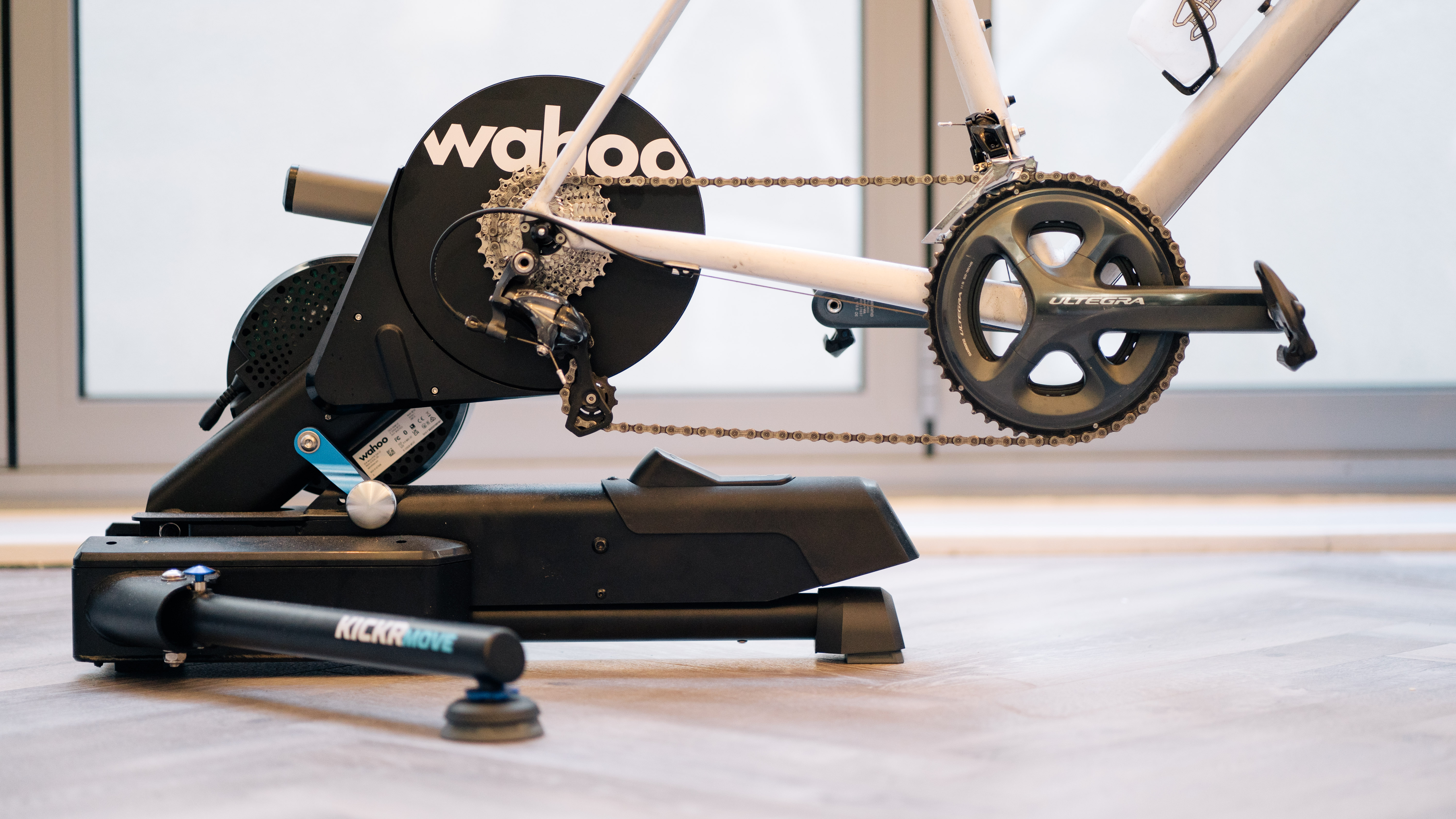Cyclingnews Verdict
If you want inbuilt movement this is probably going to be the place to go unless you want to spend absolute top-dollar on a Tacx Neo 3M. The movement does improve the ride feel, adding a degree of realism, but the correct setup is key to avoid listing to one side.
Pros
- +
Class-leading movement
- +
Easy setup
- +
Accurate power
- +
Works with Kickr Climb
Cons
- -
Lateral motion is a little unstable
- -
Easy to set it up with a sideways lean
- -
Not as good value as standard Kickr
You can trust Cyclingnews
Price: £1,149.99 / $1,299.99
Weight: 29kg / 64lbs
Claimed power accuracy: +/- 1%
Maximum power output: 2,200W
Maximum simulated grade: 20%
Connectivity: ANT+, ANT+ FE-C, WiFi, Bluetooth, Direct Connect
Compared to our usual indoor trainer reviews this is going to be relatively short. Given the actual resistance/flywheel/computer internals of the Kickr Move are the same as the standard Wahoo Kickr V6 I am only reviewing the wobbly bit here. My colleague, Josh, has already penned an excellent Wahoo Kickr review, and there is little point in me re-hashing his work for the sake of this piece. If you’re interested in things like connectivity, accuracy, power numbers and the like then go and read that first as it’s the basis for the Kickr Move.
The Kickr Move itself basically takes the standard Wahoo Kickr and mounts it on a moving roller plate. You get eight inches of fore/aft movement, allowed by either the front wheel rolling back and forward, or by an adapter plate added to the underside of the Kickr Climb gradient simulator if you’ve swapped out your front wheel for one of those. It does have a lockout if you ever did want to stop it from moving.
I do think it warrants its place in our list of the best smart trainers, but taken in the round I think it's a harder sell against the standard Kickr and the likes of the Elite Justo 2.
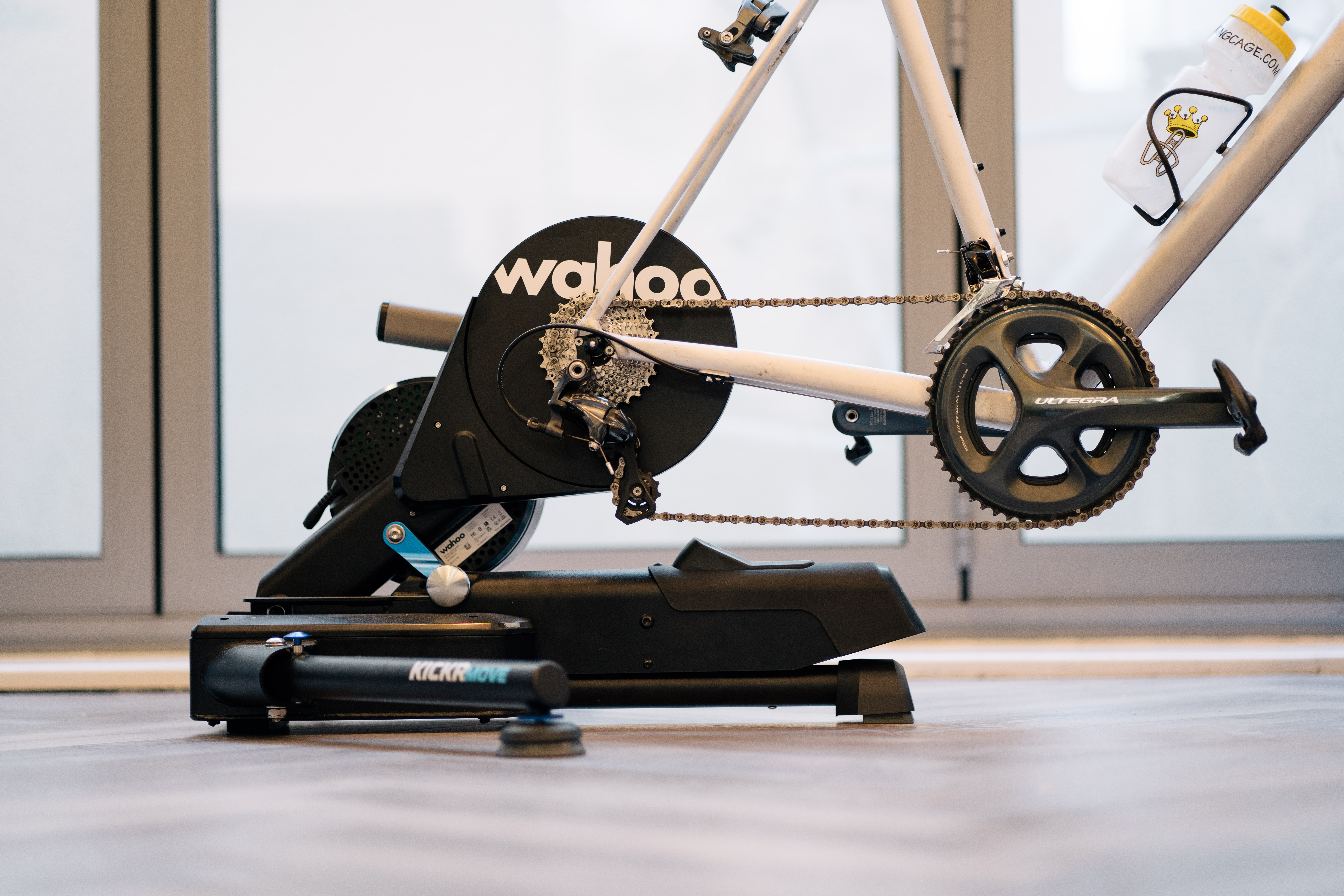
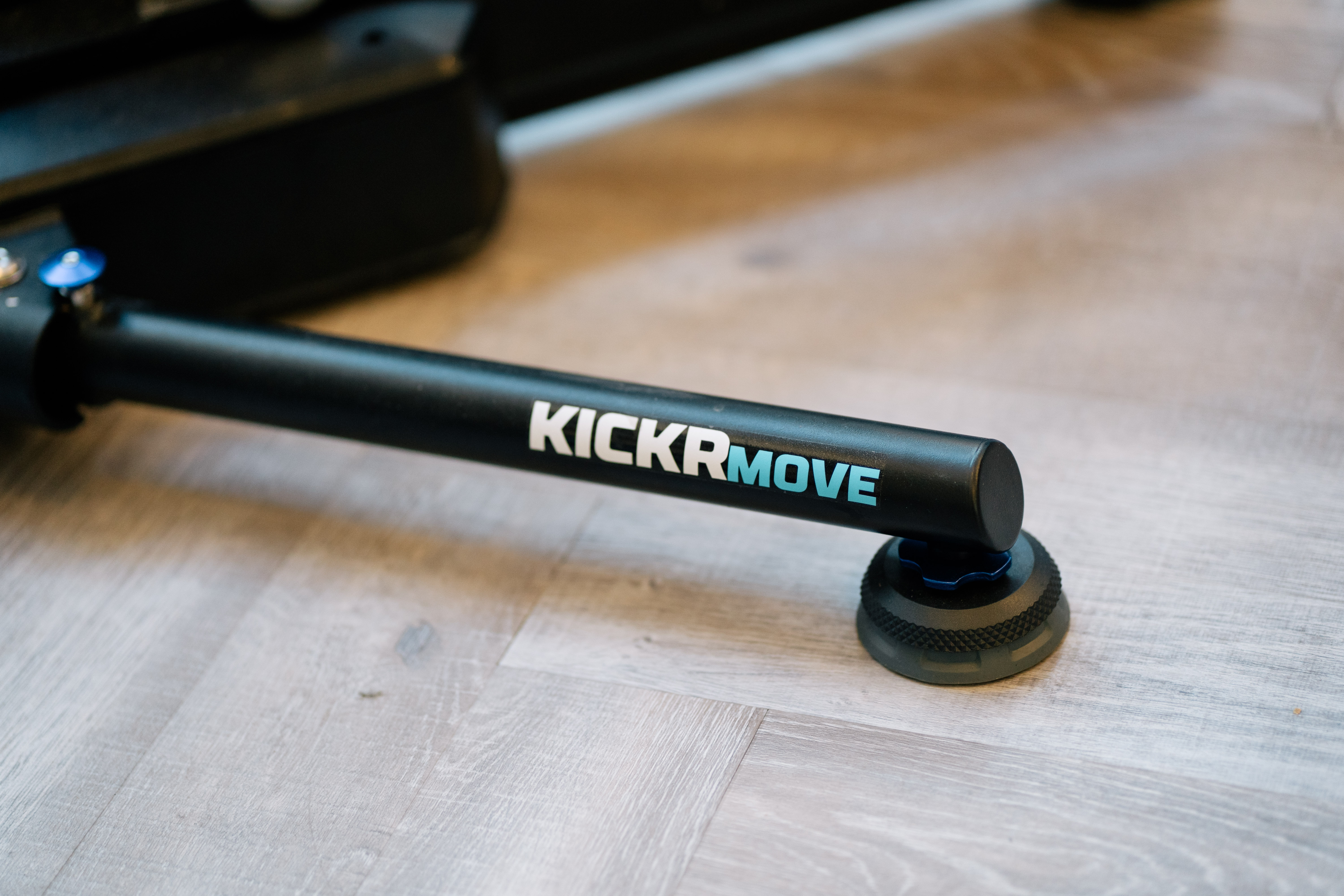
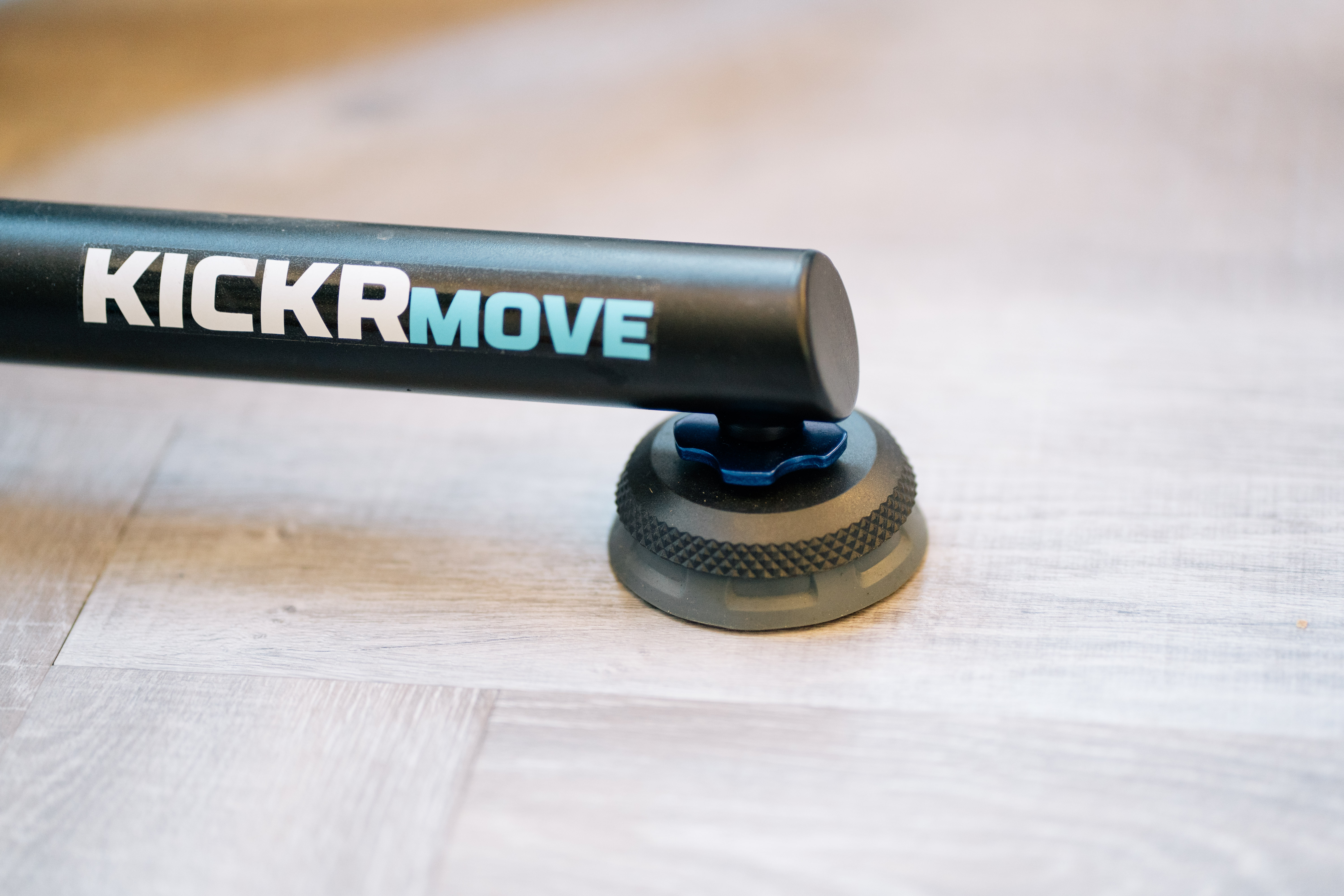
Setup
As is usual with Wahoo smart trainers, be that the Kickr or the Kickr Core, the initial setup was seamless. Zwift, and other apps, find it right away, and it is easily paired with the Wahoo app. Given that Josh rated the standard Kickr a 10/10 for connectivity, this is hardly a surprise.
Given the added mechanics it’s a little bigger in terms of footprint than the standard Kickr, and of course, you’ll need to account for that fore/aft motion if your training space is right up against a wall, but the actual mechanics of setting the thing up are exactly the same as the standard Kickr Core. Flip out the two side legs, level the feet (more on this later as it’s more important here), and set the height with the central joist based on the size of your front wheel and away you go.
You get an 11sp 11-28t cassette in the box, adapters for all the standard axle setups, and the choice of a single-speed Zwift Cog too. Fortunately, my indoor bike runs 11sp kit, but given that 12sp is becoming the norm for higher-end bikes it would be good to see a 12sp option for those users not wedded to Zwift (they do exist, Josh is one of them).
Because I had previously been furnished with a Kickr Climb which doesn’t naturally play well with the fore-aft motion of the Kickr Move. The Climb does have some rocking built in, but not enough, and so if you have the gradient-simulating front wheel substitution system you will need to buy the extra rubberised base that allows the Climb to swap back and forth more freely.
This isn't perhaps a setup issue but a putting away one: The Kickr Move is larger than the Kickr, and it's heavier too. If you have a dedicated training room (please never use the term 'pain cave' in my presence) then this will be no issue at all, but if you're a seasonal indoor rider then finding a cubby hole in which to stow the move may pose a slightly greater challenge.
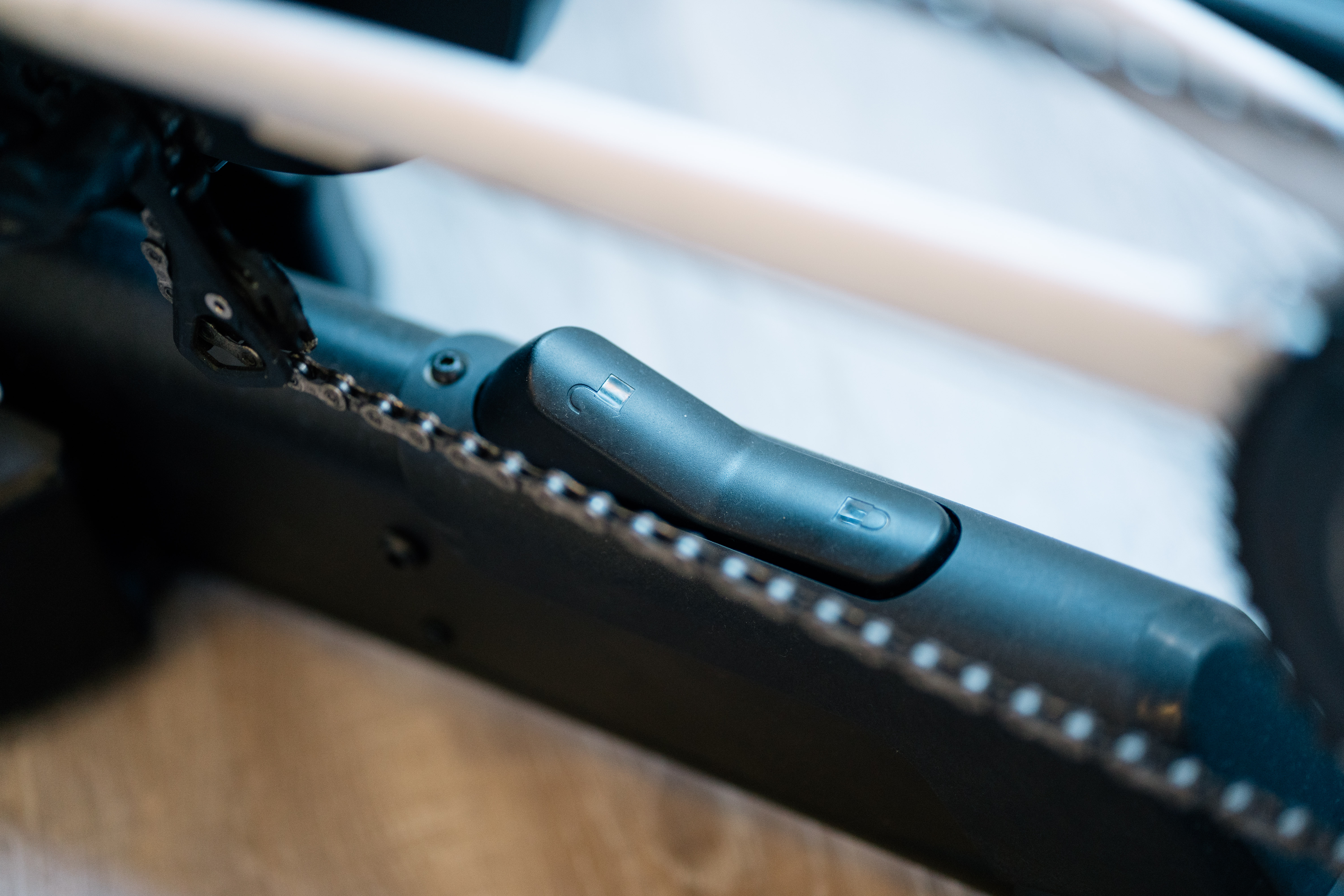
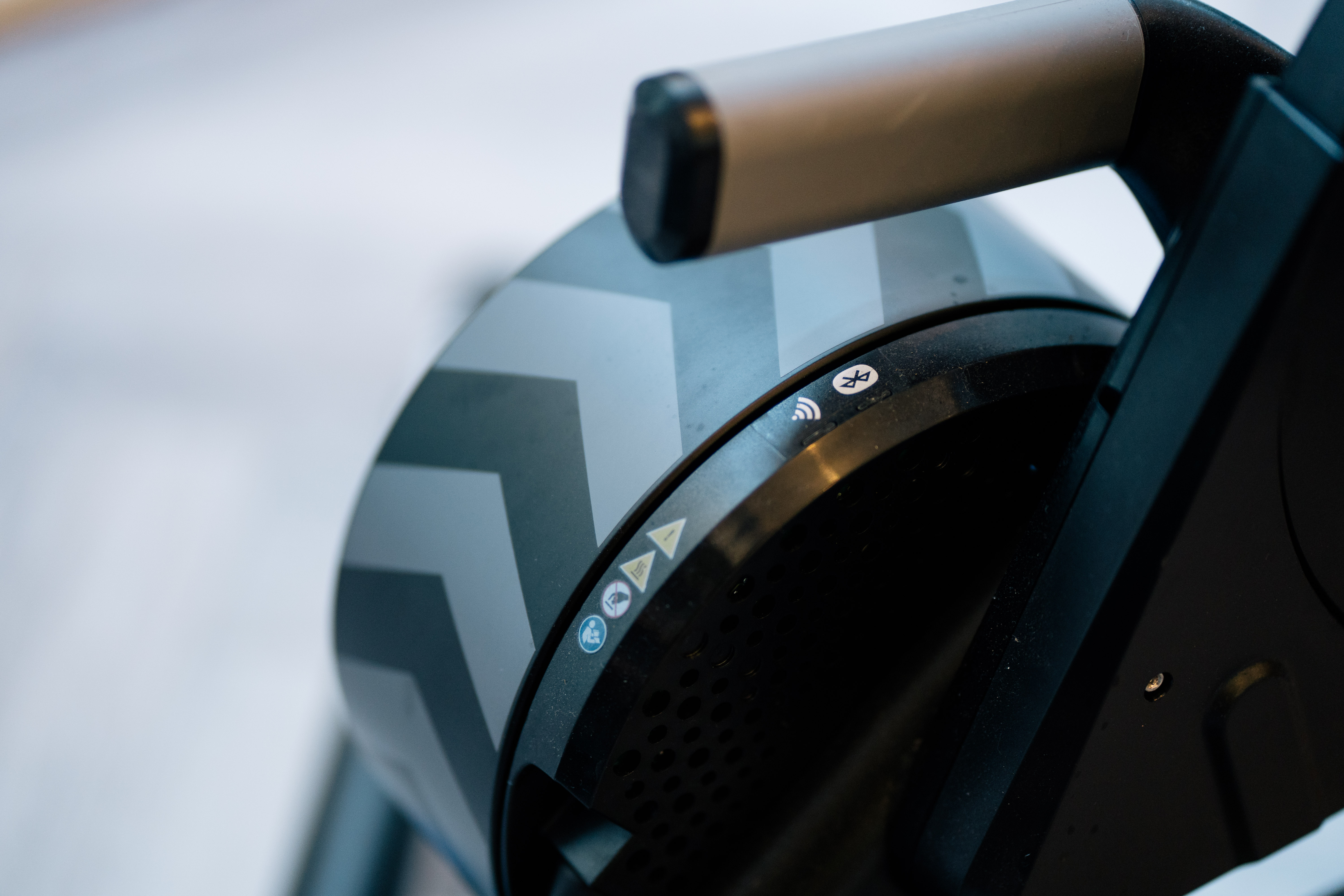
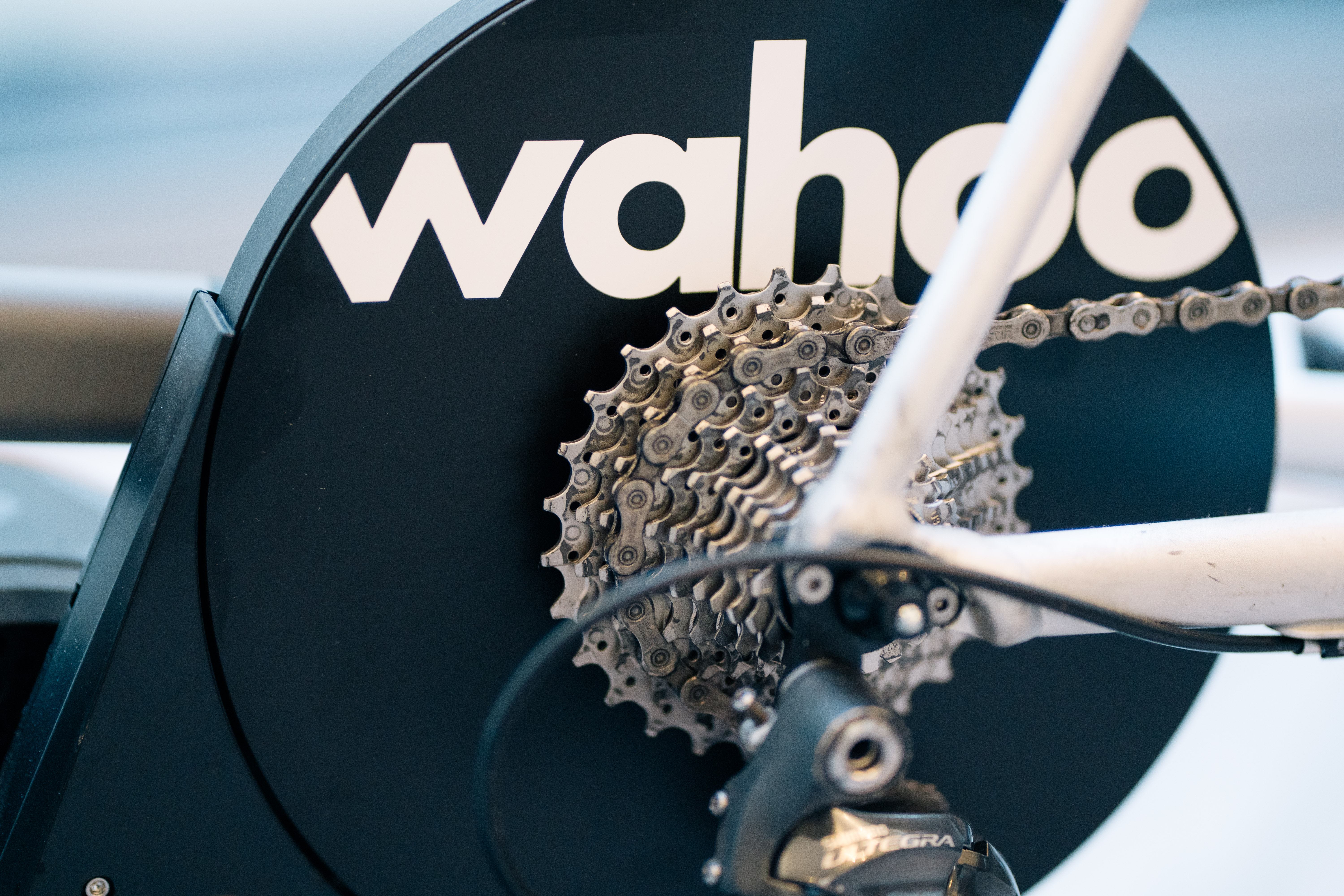
Performance
Does the fore and aft free movement of the Wahoo Kickr Move actually make any difference? Yes, a bit. In general riding the actual motion you’ll perceive is minimal. It’s certainly a little more natural feeling than riding a fully rigid indoor trainer that’s for sure, but don’t imagine you’re going to be making use of the full 8 inches of travel except in very extreme scenarios; even during interval workouts I never troubled the hard stop at the front or the rear. I can only imagine it’d become an issue if you’re doing maximum-effort sprints.
In normal use, you just find the bike bobs forward and backward almost like a boat on a calm lake. It’s not enough to make it feel like I was actually riding outside (despite the best efforts of Rouvy, a Kickr Headwind and a Kickr Climb too), but the lack of rigidity does lead to a slightly more comfortable power delivery versus the standard Kickr.
What I wasn’t such a great fan of was the side-to-side motion. I am naturally slightly wonky, with a historic back injury causing some imbalances, but for the first few rides, I found myself way off to one side despite the trainer seemingly being levelled by the adjustable feet. The standard Kickr has a bit of side-to-side motion built in by the feet of the outrigger legs being rubberised, but on the Kickr Move, there is also side-to-side motion built into the moveable track. I’m not totally sure if it’s a feature or just some necessary play in the system, but after a few rides, I found I had to readjust the feet to be quite mismatched in height in order to maintain what felt like a central position.
While riding this side-to-side movement did feel a little more clunky. It’s undamped, and while it does encourage you to engage your core and keep on the straight and narrow, when you don’t you can quite easily end up feeling a little lopsided.
I’ve got nothing to say to refute Josh’s findings on the Core in terms of its accuracy, and in the actual resistance on offer, the delivery was excellent. I only ever had it behave unusually once - during a cool down I took a second or two to stop pedalling entirely, after which it seemed to spike the power to values slightly over FTP before dropping back to zero and then repeating this again and again. It hasn’t happened since, but in speaking with Josh who has far more indoor trainer experience than me, it transpires it is a known issue. In his words "It's not a common issue, but it’s not the first time”, with suspected Bluetooth interference being the culprit, or some older firmware that I haven’t updated.
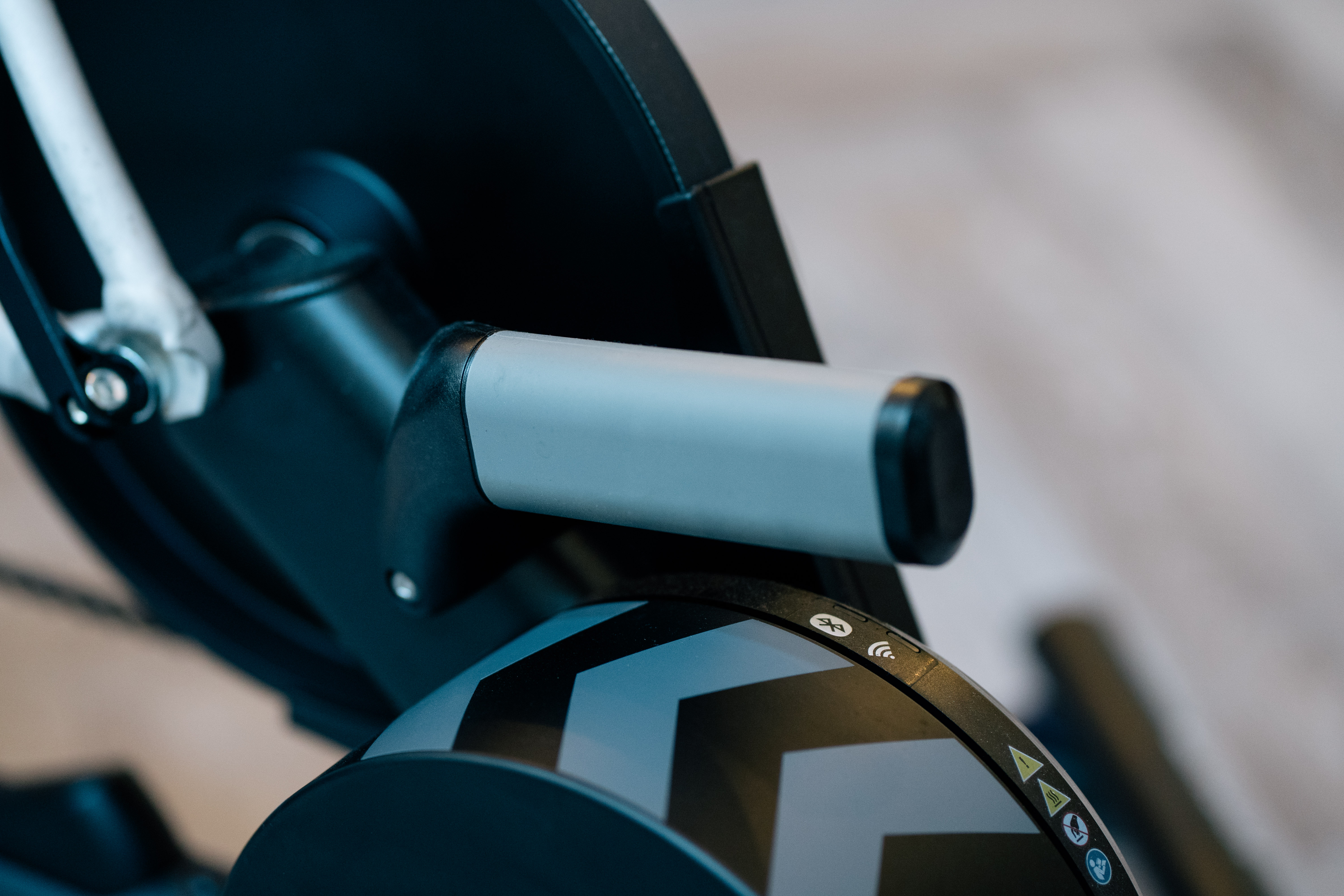
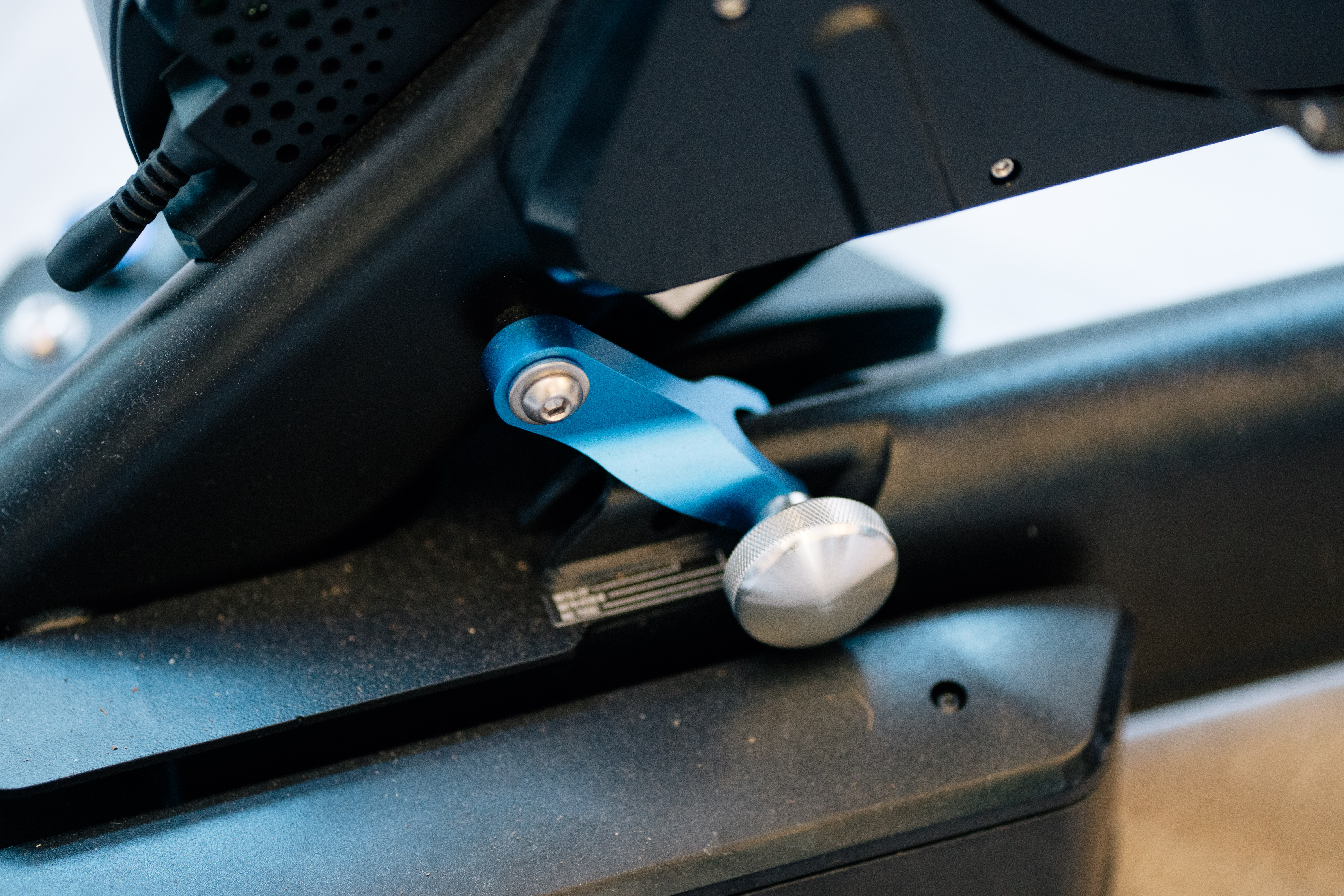
Value
This comes down to a pair of questions really. Should you buy this over the standard Kickr, and should you buy it over other similarly priced indoor trainers?
To the first question, the uplift in price is £250. As the hardware is exactly the same this is literally the cost for the fore-aft and side-to-side feel. Personally I actually think I prefer an immobile setup, primarily because I don’t really feel the need to pretend I’m outside. There is no denying that the ride feel is more realistic, and so if that’s your goal then I can see how this upcharge would be money well spent, but just remember it’s more realistic, not actually realistic. If you want the movement but don’t care about the specs so much then the Kickr Core and a high-end rocker plate would achieve the same thing for a lower outlay.
How does it compare to other trainers generally? Well, it’s hard to judge because so few come with built-in motion. It’s cheaper by a noticeable amount than the money-no-object Tacx Neo 3M which also has built-in movement, so in that context it represents good value, but it’s more expensive than the Elite Justo 2, our ‘best overall’ option, though that doesn’t have motion.
Essentially if you really want inbuilt motion AND decent specs it’s good value, if you want one or the other, spend your money elsewhere.
Verdict
The Wahoo Kickr Core builds upon the really excellent Kickr V6. It’s got the same specs, it works just as well, and it certainly offers a more realistic ride, especially when paired with something like the Kickr Climb. Just be very careful when setting it up that what looks level and what feels level may be two different things. If you’re fully baked into the Wahoo Ecosystem with an older trainer I can see why you’d want to opt for this one over the standard Kickr.
If you must have movement I think it represents pretty decent value, but as a standalone trainer taken in the round, I’d probably be spending my money on either the Kickr or the Elite Justo 2 for extra pedalling analysis and saving the cash.
In the scorecard below those fields marked with a "*" I have simply transposed Josh's findings from the Kickr V6 for consistency.
| Attributes | Notes | Rating |
|---|---|---|
| *Ease of Use | Incredibly simple setup on both hardware and software side. A cassette comes fitted, but you don't get to choose which. | 9/10 |
| *ERG Mode | It's smooth, accurate and responsive, with easy ramp back to power if you have to stop mid interval | 10/10 |
| Ride Feel | An excellent, hefty flywheel, plus a much more natural fore/aft movement makes it the go-to for ride feel | 10/10 |
| *Power accuracy | Wahoo quotes market-leading accuracy of 1% and I've no reasons to doubt that in my testing | 10/10 |
| *Connectivity | While WiFi hasn't improved the ride for me, the Bluetooth is still as good as ever. What's more, the Kickr offers the greatest choice of connection options | 10/10 |
| *Noise | Consistently under 58db in my tests. There's more noise from the drivetrain than the trainer | 10/10 |
| Stability | I actually found the left-right movement a little unstable and undamped. Core engagement is key, but so is an accurate setup with the feet | 8/10 |
| Storability | Bigger and heavier than the Kickr, but it does still fold away relatively small with collapsible legs and an easy carry handle | 8/10 |
| Value | If you want inbuilt movement it offers probably the best value as a single package, but taken in the round its not as good value as the likes of the Elite Justo 2 | 7/10 |
| Total | Row 9 - Cell 1 | 91% |

Will joined the Cyclingnews team as a reviews writer in 2022, having previously written for Cyclist, BikeRadar and Advntr. He’s tried his hand at most cycling disciplines, from the standard mix of road, gravel, and mountain bike, to the more unusual like bike polo and tracklocross. He’s made his own bike frames, covered tech news from the biggest races on the planet, and published countless premium galleries thanks to his excellent photographic eye. Also, given he doesn’t ever ride indoors he’s become a real expert on foul-weather riding gear. His collection of bikes is a real smorgasbord, with everything from vintage-style steel tourers through to superlight flat bar hill climb machines.
